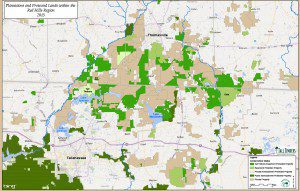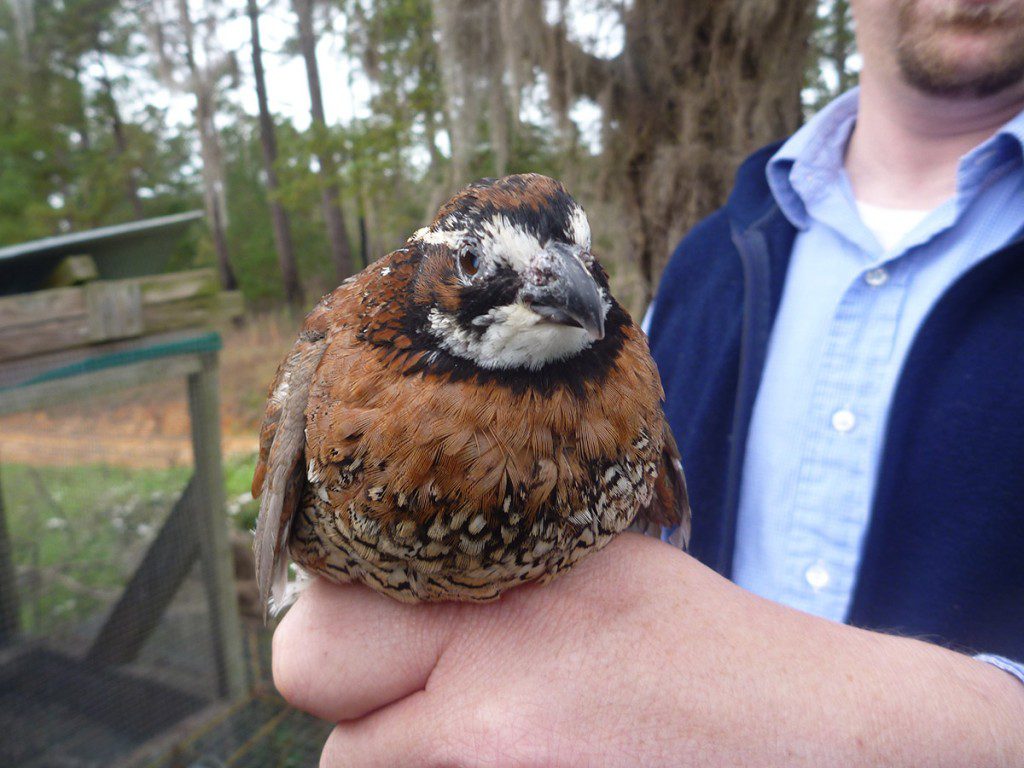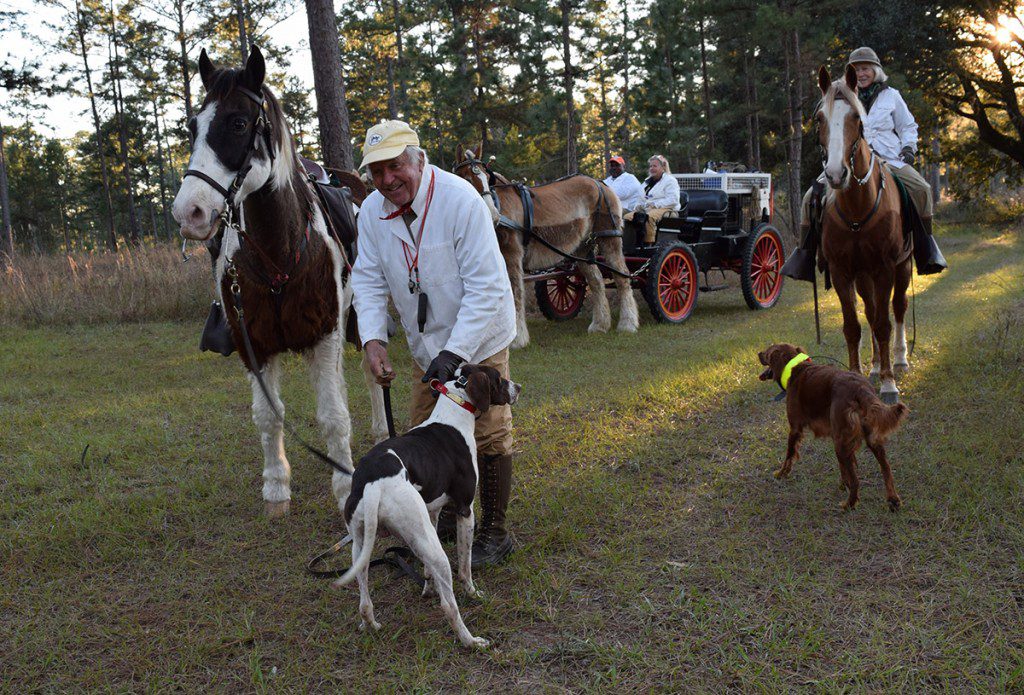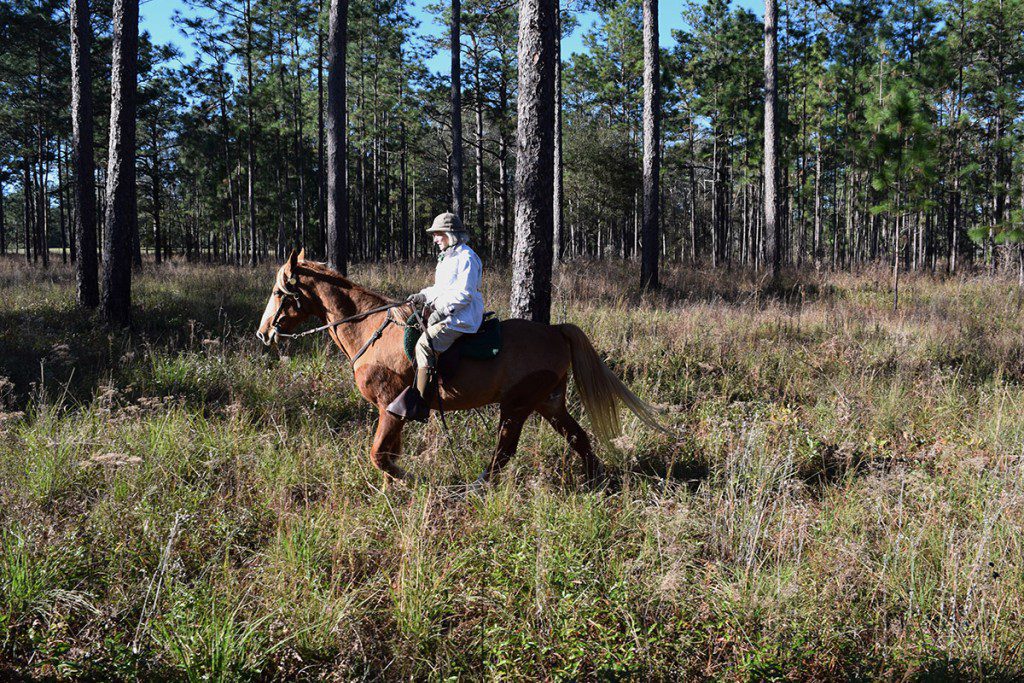Welcome to Part 1 (of 10) of Roaming the Red Hills, which originally aired on the March 31 episode of WFSU’s Local Routes. Over ten 3-minute videos, we’ll explore the natural soul of the Red Hills of Florida and Georgia, from the pine uplands down to its rivers, lakes, and farms. Thanks to Tracy Horenbein for creating original compositions for this video series. The series is narrated by Jim McMurtry.
Funding for Roaming the Red Hills was provided by Tall Timbers Research Station and Land Conservancy.
Rob Diaz de Villegas WFSU-TV
If I ignore the 1960s era Volkswagen Thing trailing us, I can almost imagine that it’s 100 years ago on Elsoma Plantation. All I see is longleaf pine forest in every direction. Everyone is on horseback and in matching white jackets. And I’m bumping along in a horse-drawn wagon that remembers World War I. We’re on a quail hunt in the Red Hills.

A map of Red Hills properties. Shades of green represent land in conservation easement and other protected properties.
Quail hunting is probably the biggest area tradition about which the average resident of our area knows least. In a triangle containing Thomasville in Georgia, and Monticello and Tallahassee in Florida, lie over 300,000 acres of privately owned forest land. The owners are often northerners who come down for a few weeks a year, when Quail are in season. One example is our host. Elsoma’s owner is Charles Chapin III, of New Jersey. His grandfather started coming to Thomasville in the 1880s to hunt bobwhite quail on farmland. After the turn of the century, he bought the land through which we’re riding now. Charles Chapin I was one of dozens of northerners who bought pine woods, or converted farmland to pine lands. The forest created by their properties is the heart of what we call the Red Hills Region.
It’s a beautiful day; sunny and mildly chilly. In other words, not a great day for quail hunting. “Good quail hunting conditions aren’t necessarily good conditions for the people hunting.” Charles tells me. Yesterday was cold and dreary and, as he says in the video, his dogs found “bird after bird.” But the fun of a video on quail hunting isn’t in the number of birds dragged out by dogs.
Scene and Setting: Wagons, Bird Dogs, and Horses
The Chapin’s wagon is a stylish ride, if not entirely smooth.
“The newer ones have tractor wheels,” Jean Chapin tells us. She’s Charles’ wife. “They’re not at all as nice looking. But they’re a lot more sensible.” When the wheels needed repairs, they had to be taken to Pennsylvania Amish country. They may not be sensible, but they add immensely to the feel of a day of hunting.
Dogs are also a big part of quail hunting culture. “One particular interest of mine is in the bird dogs,” Charles tells us. “I find it fascinating to watch, to work with, to help train, to try to train myself to the dog.” A bird dog with a good bloodline is worth a pretty penny, and they are heavily trained. Between hunting seasons, many of the dogs compete at local field trials such as the Georgia/ Florida Invitational and Red Hills Spaniels Invitationals.
Jean’s favorite part is riding through the woods on a Tennessee Walker. I imagine rides through forests like this one had an impact on those original northerners who decided to buy land here.
In the video, I call Red Hills plantation owners “Accidental Conservationists.” The land management practices they use to maintain their land, prescribed burning in particular, are done to create a favorable habitat for bobwhite quail, whose numbers on such properties are higher than in other places (such as Texas and Oklahoma). That endangered species like red cockaded woodpeckers and gopher tortoises benefit is a bonus.
Listening to Jean talk about riding in the woods, however, I think that perhaps all of the effort of maintaining the Red Hills forest is for more than just the benefit of one game bird. The scene and setting are as important as the catch, and no part of the scene is as important as the longleaf forest. The tall widely spaced trees, pine needle filtered light creating soft patchy shadows on lush grasses and flowers- as Jean says in the video, “It’s glorious.”
Like many other plantation owners, they have land in conservation easements with Tall Timbers Land Conservancy. Tall Timbers shares best practices for land management with the landowner, which Charles Chapin likes. And he’s grown to appreciate longleaf species other than bobwhites.
Jean tells us “One of the best experiences we’ve had over the last several years is a day with Jim Cox.” The Chapins tell me of a friend of theirs who visited, a birder. Over the course of one morning, Jim, Tall Timbers Research Station’s Director of Vertebrate Ecology, had mist netted two birds on their friend’s bucket list: a Bachman’s sparrow and red cockaded woodpecker. Both are species endemic to southern pine lands. Jim let their friend hold each bird. Jean recounts the friend’s reaction “‘Two species on my life list, and I’ve had them both in my hand this morning!'”
The next chapter in Roaming the Red Hills is just such an encounter with Jim Cox, as he bands a seven day old red cockaded woodpecker and takes an FSU biology class into an old growth forest.
Come adventure with us in the Red Hills, Apalachicola River and Bay, the Forgotten Coast, and More! Subscribe to the WFSU Ecology Blog by Email.

Northern bobwhite quail (Colinus virginianus) in the hand of Dr. Theron Terhune, Game Bird Program Director at Tall Timbers Research Station & Land Conservancy.


